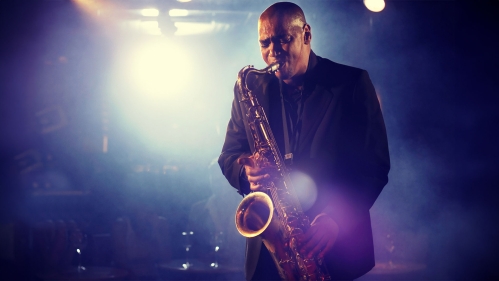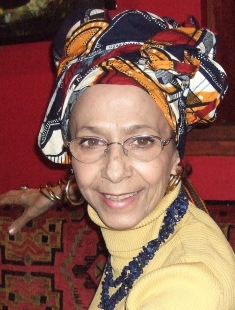The Evolution and Impact of Jazz

Students enrolled in "The Sociology of Jazz" at Rutgers University–Camden are being treated to a deep exploration of the lives and times of the genre's most influential artists through music, film, live performances, and more.

“We’ll go to the Clef Club in Philadelphia and hopefully to the Institute of Jazz Studies at Rutgers–Newark,” said Katrina Hazzard-Donald, a professor of sociology at Rutgers–Camden and a nationally recognized scholar of African American dance and culture.
Hazzard-Donald teaches the course, which is designed to make students feel captivated and inspired by this uniquely American style of music. She also hopes to dispel some common myths, including that jazz originated in New Orleans around the turn of the last century.
“There is a certain musical tradition that we can attribute to New Orleans, but to say that jazz started there is not altogether accurate,” Hazzard-Donald said. The true origins of jazz evolved out of a variety of West African customs brought to America by enslaved people, including drum patterns, rhythmic ring shouts, syncopated clapping, and the tradition of ‘call and response,' a form of interaction where one person offers a particular song or phrase and the audience responds accordingly.
Yet, while jazz has deep roots in the traditions of West Africa that go as far back as the 12th century, the Crescent City eventually became a fertile environment for these elements to blossom in the late 19th and early part of the 20th century.
She emphasized that the city's unique history—it was founded by the French, briefly controlled by the Spanish, and then returned to French control before becoming a part of the United States in the Louisiana Purchase in 1803—also contributed to the evolution of jazz as a musical form.
"In New Orleans, around this time, you find what I like to call the Creole music matrix because the population is made up of people from around Africa and the Caribbean,” Hazzard-Donald said.
The genre was also influenced by a blending of the sacred and the secular, with the spiritual and religious traditions brought from West Africa serving as an additional variable in the overall development of jazz.
"The idea of the sacred and the secular being separate is very Western," Hazzard-Donald said. "For many people around the globe, everything is sacred." Consequently, the musical structure of the early spirituals, which also grew out of the field calls of enslaved people and were based on traditions brought from West Africa, was part of the overall culture that laid the foundation for later musical innovation.
The innovation inherent in the development of jazz eventually became a core characteristic, with each generation of artists introducing techniques and elements built on the original West African traditions and made new through creative exploration.
From the improvisational solos of Louis Armstrong to the bebop movement led by Dizzy Gillespie and Thelonious Monk to the vocal improvisation of scat made popular most famously by Ella Fitzgerald, the elements and rhythms of jazz have also gone on to inspire, influence, and propel other musicians of every genre, from doo-wop and early days of rock to R&B and the emergence of hip-hop, creating new opportunities for artistic expression.
By deeply exploring the music through the variety of approaches she uses in her class, Hazzard-Donald hopes her students gain an appreciation for the foundation jazz provided for musicians then and now.
“What a DJ is doing with a turntable and the scratch has the same relationship to the beat as what Ella Fitzgerald was doing when she sang scat with Chick Webb or any of the big bands that backed her up,” Hazzard-Donald said.